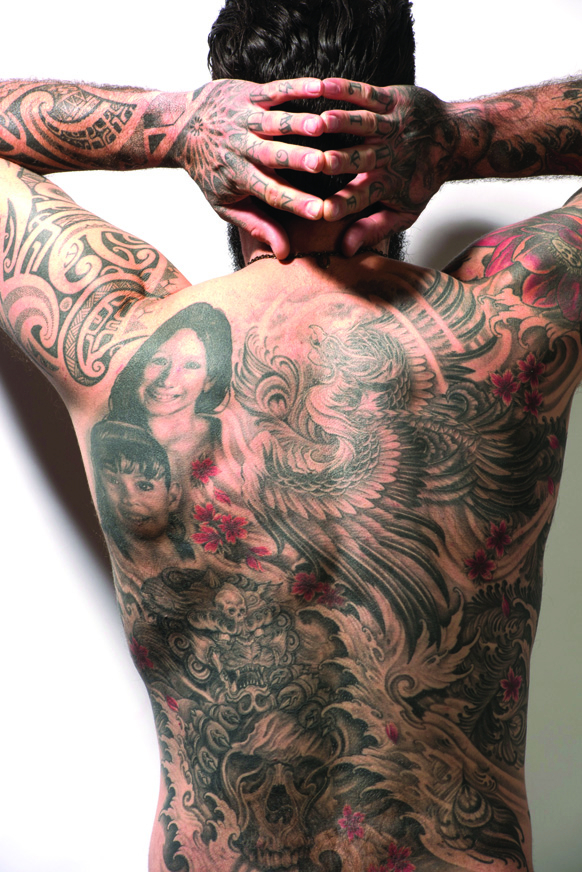Tattoos: Exploring Tattoo Culture Around the World

Guest blog by Sascha Priewe, Managing Director - Culture Centres (Ancient Cultures, World Art & Culture, Textiles & Fashions)
One in five Canadians has at least one tattoo, including Prime Minister Justin Trudeau, who sports a Haida symbol on his left shoulder. Tattoos have moved into the mainstream. Companies have begun to relax rules on visible tattoos in the workplace. As the tattoo industry is growing, so is the tattoo-removal industry. This new exhibition charts the journey of tattooing from its deep historical and global roots, via its marginalization, to its current revival in many cultures around the world.
The world’s oldest tattoos, directly observed on the preserved skin, are sported by Ötzi, the Iceman, who perished in the Italian-Austrian Alps circa 3250 BC. Archaeological and historical evidence has shown that tattooing was a widespread phenomenon, present on every inhabited continent from prehistory to the present. Tattoos could reflect status, identity, or group affiliation, or be cosmologically significant.
Along with other factors, the spread of Christianity helped sever links between indigenous people and their tattooing traditions by the imposition of a different value system. In indigenous societies, tattooing was either suppressed, forgotten, or pushed to the margins. Tattoos became associated primarily with prisoners, prostitutes, soldiers, and gang members. But today tattooing has made a comeback as an emblem of choice and as an expression of one’s identity in an ever more globalized world. It has acquired the status of an art form: tattooing has gravitated from the margins to the mainstream.
The ROM is proud to present Tattoos, the North American premiere of the exhibition Tatoueurs, tatoués, originally from the musée du quai Branly in Paris, curated by Anne & Julien, creators of the art magazine HEY! Modern Art & Pop Culture, and supported by the world-famous tattoo artist Tin-Tin as artistic consultant. The exhibition showcases almost 200 loans from the Musée du quai Branly, other museums, and private lenders in Europe, and is augmented by more than a dozen objects from the ROM’s Arctic, Egyptian, Pacific, and East Asian collections. In addition to posters, prints, paintings, photographs, figurines, tattooing needles, machines, and other tools, the exhibition also features 13 realistic silicone body parts tattooed by some of the world’s leading tattoo artists. These artists include Tin-Tin (France), Horiyoshi III (Japan), Filip Leu (Switzerland), Paul Booth (USA), Xed LeHead (UK), Chimé (Polynesia), and Montreal’s Yann Black.
How to see it: Tattoos runs until September 5, 2016.
Originally published in the Spring 2016 edition of the ROM Magazine.
